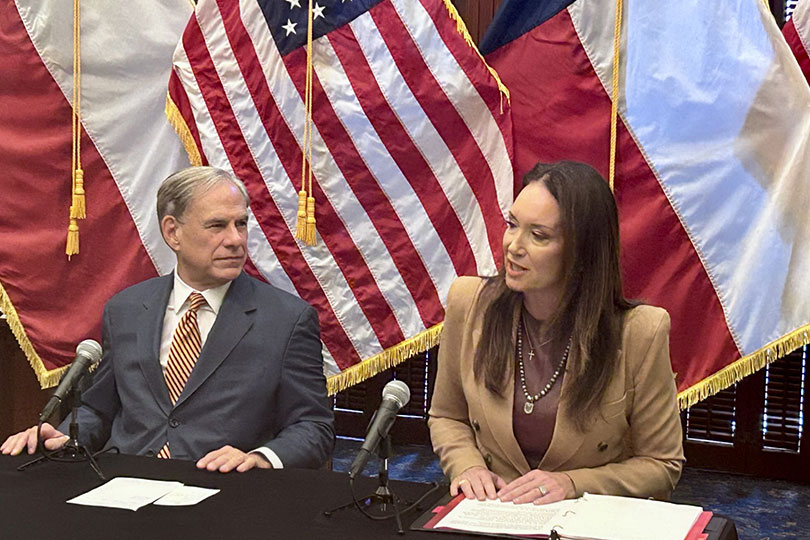By Julie Tomascik
Editor
The U.S. Department of Agriculture (USDA) announced new steps, including funding and construction of a sterile insect production facility in Texas, to prevent the New World screwworm (NWS) from reaching the U.S.
The agency will invest up to $750 million to build the facility at Moore Air Base in Edinburg. Once complete, it is expected to produce up to 300 million sterile flies per week.
This is a pivotal step forward in protecting Texas and U.S. livestock and wildlife, Texas Farm Bureau President Russell Boening said.
The organization spearheaded a letter earlier this summer urging USDA and the Trump administration to take proactive measures, like constructing a sterile insect facility, to control the New World screwworm.
“Texas Farm Bureau heard loud and clear from its members about the need for a domestic production facility and worked directly with USDA and Congressional leaders to reach this milestone,” Boening said. “The commitment to building a facility is part of a long-term strategy to combat NWS and would not have been possible without this partnership.”
This will be the only domestic facility and will complement the sterile flies produced in Panama and Mexico.
“The construction of a domestic sterile fly production facility will ensure the United States continues to lead the way in combating this devastating pest,” U.S. Secretary of Agriculture Brooke Rollins said. “This is exactly the kind of forward-looking investment we need to defend our food supply and livestock industry from foreign biological threats.”
The sterile insect technique is the only proven method for eradicating the New World screwworm.
A domestic outbreak could result in catastrophic losses, with projected losses of $1.8 billion annually in Texas cattle alone and more than $10.6 billion in national economic damages.
“This threat is real and urgent, and we cannot afford delays,” Boening said. “Immediate construction and deployment of this facility are essential to prevent irreversible harm to the agricultural economy and our nation’s food system.”
Rollins also outlined additional prevention measures, including $100 million for new technologies like advanced traps and lures.
“I’m calling on the brightest in the country to build on our existing tools and help us outpace this pest quickly and in the most innovative way possible,” Rollins said.
USDA will also hire additional tick riders, the mounted patrols who monitor livestock and wildlife along the southern border, and expand the use of the Beagle Brigade to detect screwworm infestations.
“The tick riders are mounted on horseback and will provide the first line of defense against a New World screwworm or an outbreak along the U.S.-Mexico border,” Rollins said. “We’re also training our beagles of the Beagle Brigade to detect screwworm infections, and we’ll be significantly ramping up our border surveillance program.”
The New World screwworm is a parasitic fly whose larvae infest warm-blooded animals, feeding on living tissue and often leading to severe wounds or death if untreated. Its spread would have significant impacts on livestock, wildlife, birds and even pets.
The U.S. typically imports more than 1 million Mexican cattle each year, but the border will remain closed to cattle imports until the assurances are made that Mexico’s outbreak is under control.
“We’ve got a lot of work to do, but we have to protect our cattle industry and our beef industry in this country, and in so doing protect our food supply, and in so doing protect our national security for America,” Rollins said.
Rollins made the announcement alongside Texas Gov. Greg Abbott in Austin Aug. 15, underscoring the state’s central role in safeguarding the nation’s cattle industry.


Leave A Comment